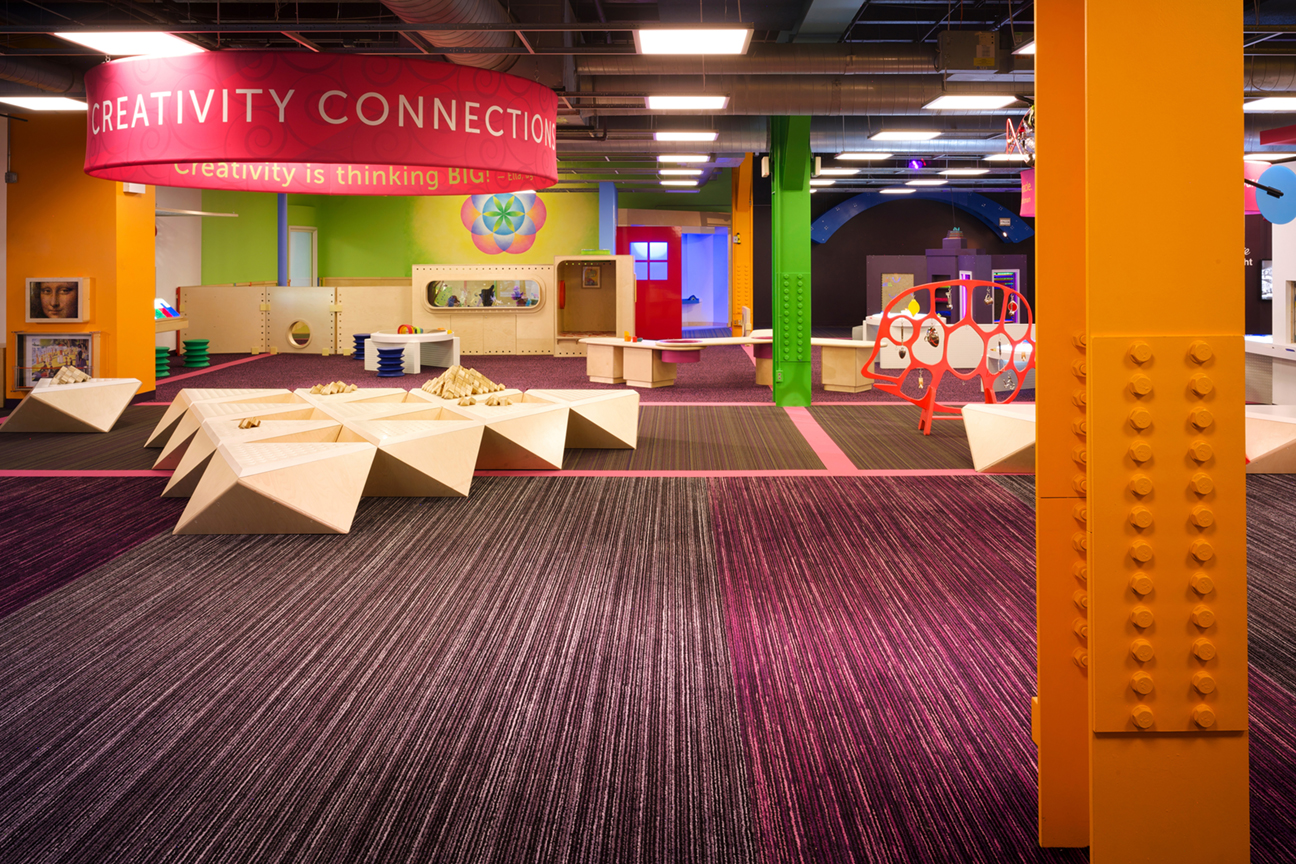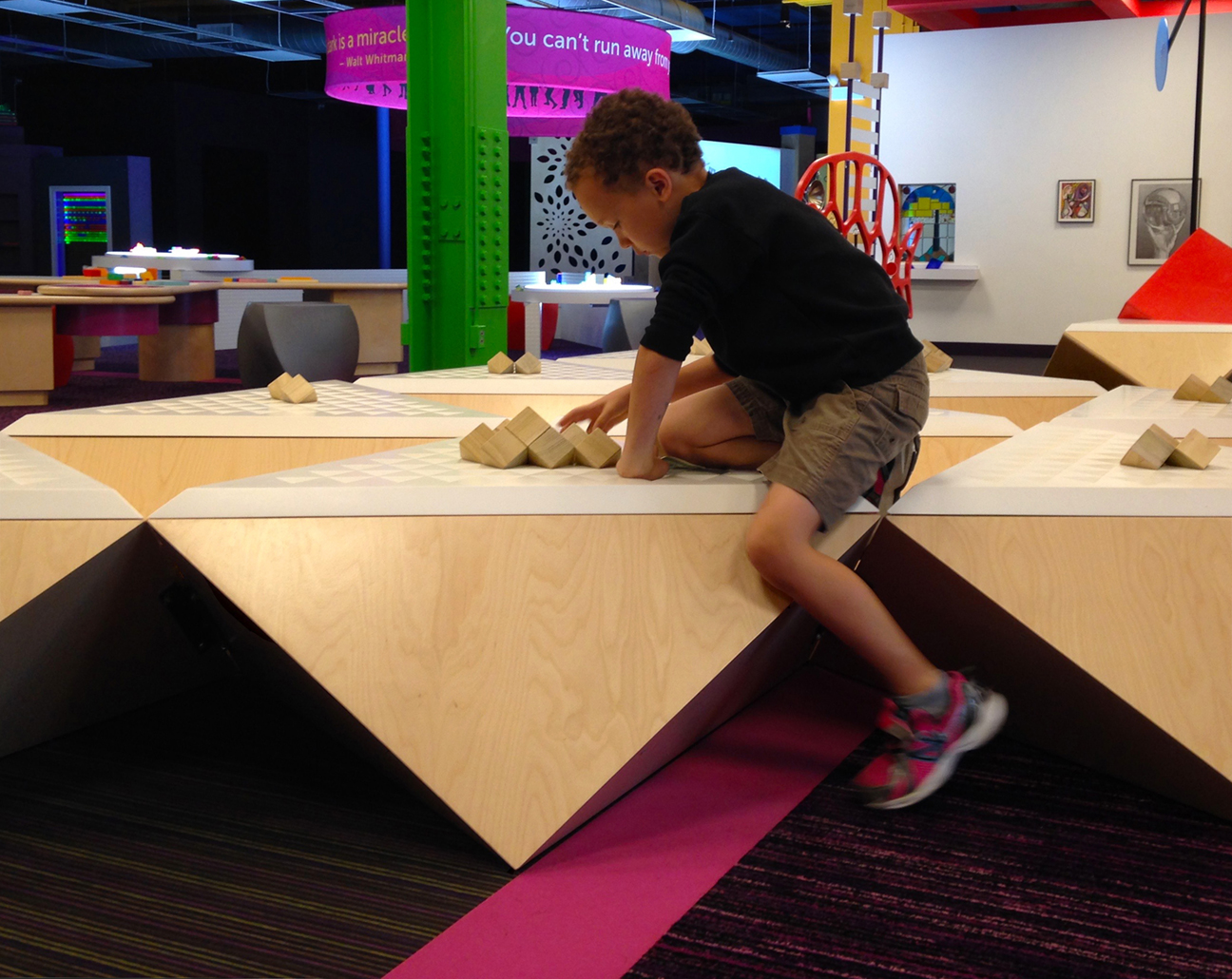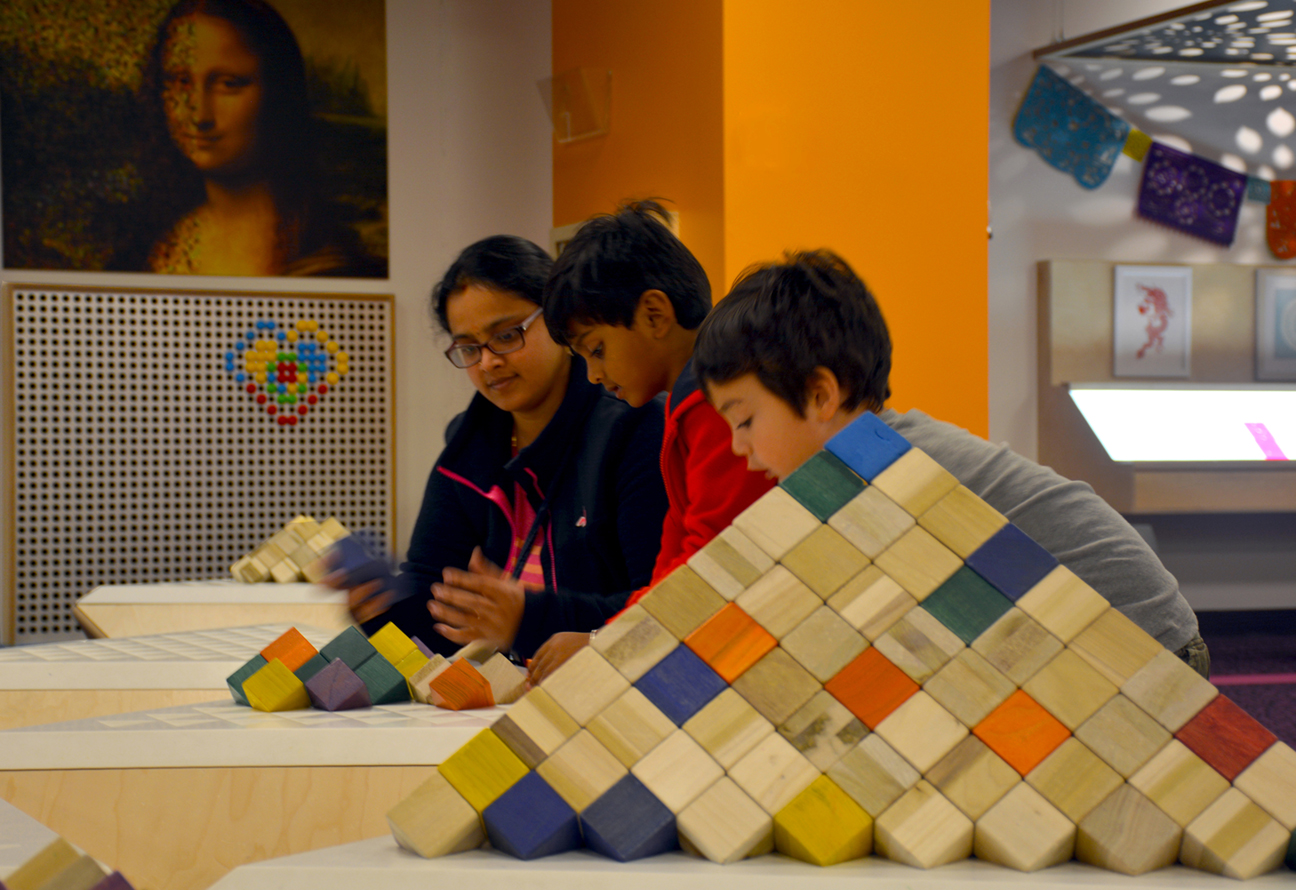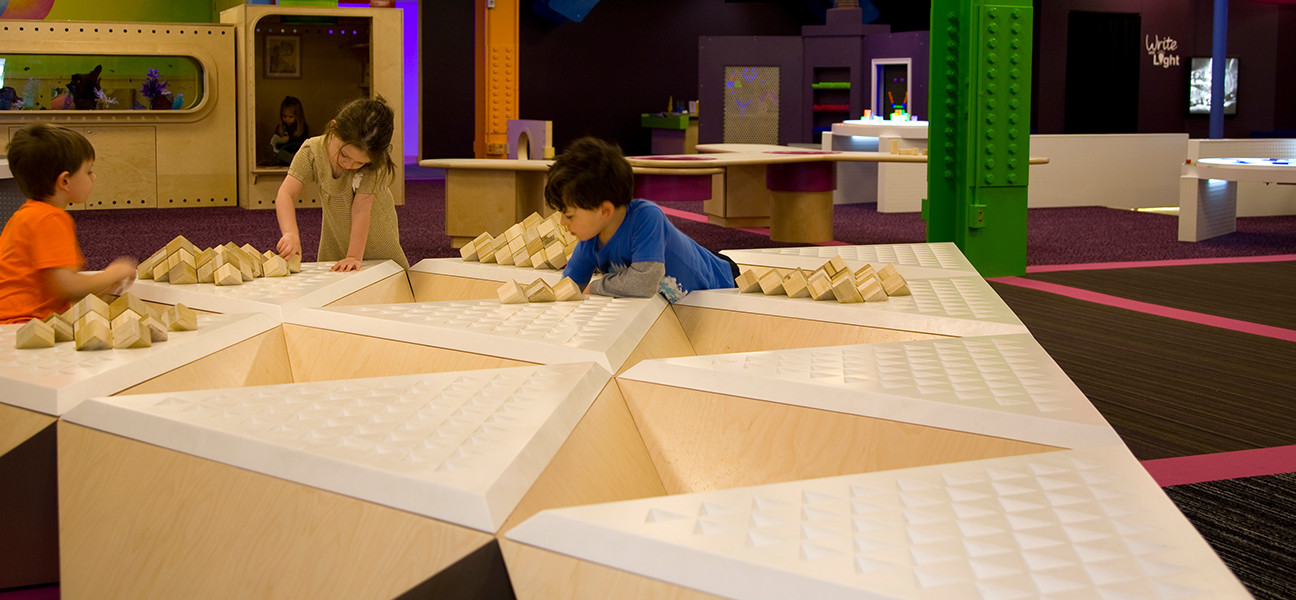Pyramid Bench
Citation of Merit
Firm: Architecture is Fun, Inc.
Location: Naperville, Illinois
General Contractor: Chicago Scenic Studios
Client: DuPage Children’s Musuem

Geometry as Object for Expressing Place and Play Shaping an intriguing portal into Science, Technology, Engineering, Art, and Math (STEAM)-based learning, the Pyramid Bench is an object that expresses place and play. At the DuPage Children’s Museum, the imaginative design and impressive scale of the Pyramid Bench creates spatial understandings for interpreting and appreciating the geometry inherent in the world that surrounds us. During a design charette addressing a post-flood renovation for the Museum, the design team and educators built pyramids with a small wood cube. By increasing the scale and using geometry as the exhibit gateway, children and families develop a strong sense of spatial relationships by sitting and building with larger stained-wood blocks that reside within the bench recesses. The design concept thus super-sizes the pyramid, formed of Baltic Birch octahedrons (rectified tetratetrahedrons) with routed Corian game tops, as an opportunity to blur the architectural and educational boundaries between: exhibit and public space, furniture and interactive object, play and learning
The Pyramid Bench opens out into the museum’s public spaces, embracing and connecting family engagement and play in ways that help transition children from the entry into Creativity Connections, where STEAM-based concepts are presented in hands-on exhibits. As caregivers perch on the bench alongside their children, opportunities to socialize and engage in constructive play are increased. Children building constructions alone or with help gain a conceptual understanding of structural engineering and their building skills quickly increase as they explore pattern, stacking, and the forces of gravity, tension, stability, and balance. In its simplicity, geometry, and openness, the Pyramid Bench encourages creativity and left- and right-brain logic and visualization development. As furniture, families lounge together while children climb in, on, and through its form. As immersive exhibit, the bench invites and encourages constructive play. As public place, the Pyramid Bench supports the visitor experience by connection to the museum’s architecture, built of shapes and space, and to geometry as a language and invitation to play.


